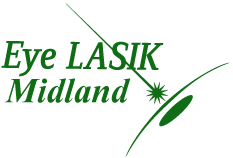June means lemonade, sunshine, and weekend road trips. However, June is Cataract Awareness Month, too. As eye healthcare providers, we wanted to take an opportunity to explain a bit of information about this common eye condition.
What Is A Cataract?
Simply put, cataracts are the clouding of the eye’s lens. A good analogy would be to think of fog on a mirror or smudging on a camera lens. According to All About Vision, cataracts are the leading cause of blindness throughout the world and the most widespread cause of vision loss in people over the age of 40.
There are three types of cataracts:
- Corticular cataracts begin in the peripheral area of the lens. Known for its “wagon-wheel” type pattern, the spokes move towards the eye’s center.
- Subcapsular cataracts usually occur in patients who suffer from diabetes or take steroid medications. These cataracts occur at the back of the eye’s lens.
- Nuclear cataracts are directly in the center of the ocular lens. This type of cataract is often found in older patients.
How Are Cataracts Diagnosed?
Like many diseases, patients are usually the first to discover an issue due to their symptoms. Patients may notice blurred vision, dulling of colors, or might see light as a starburst-like pattern. However, cataracts can only be properly diagnosed by a professional optometrist.
What Are The Treatment Options?
Often, doctors will try to treat the blurred vision with bifocal lenses and proper lighting. However, after these non-invasive treatment options stop working, patients have the choice to undergo cataract surgery. The surgeon removes the patient’s clouded lens and it replaces it with a clear plastic lens. The surgical option is considered quite effective. However, we recommend discussing all possible treatment options with your eye health provider.
How Can I Prevent Cataracts?
Even with modern technology, healthcare professions still cannot determine a definitive underlying cause of cataracts. There are many factors, including exposure to UV rays, diabetes, and nutrition that impact a patient’s likelihood of developing cataracts. However, there are ways to prevent them:
- Eat a healthy diet based rich in omega-3 fatty acids, vitamin E, and lutein. In fact, you can read our blog about eye-healthy foods here.
- Protect your eyes by wearing UV-blocking sunglasses at all times.
- Stay healthy! Smokers, those with diabetes, and patients who take steroid treatments have an increased risk.
- See your eye doctor for regular annual examinations. Cataracts are easy to diagnose and treat when caught early.

